Future of Bridges | How Network Rail managed to repair key railway bridge in just 66 days
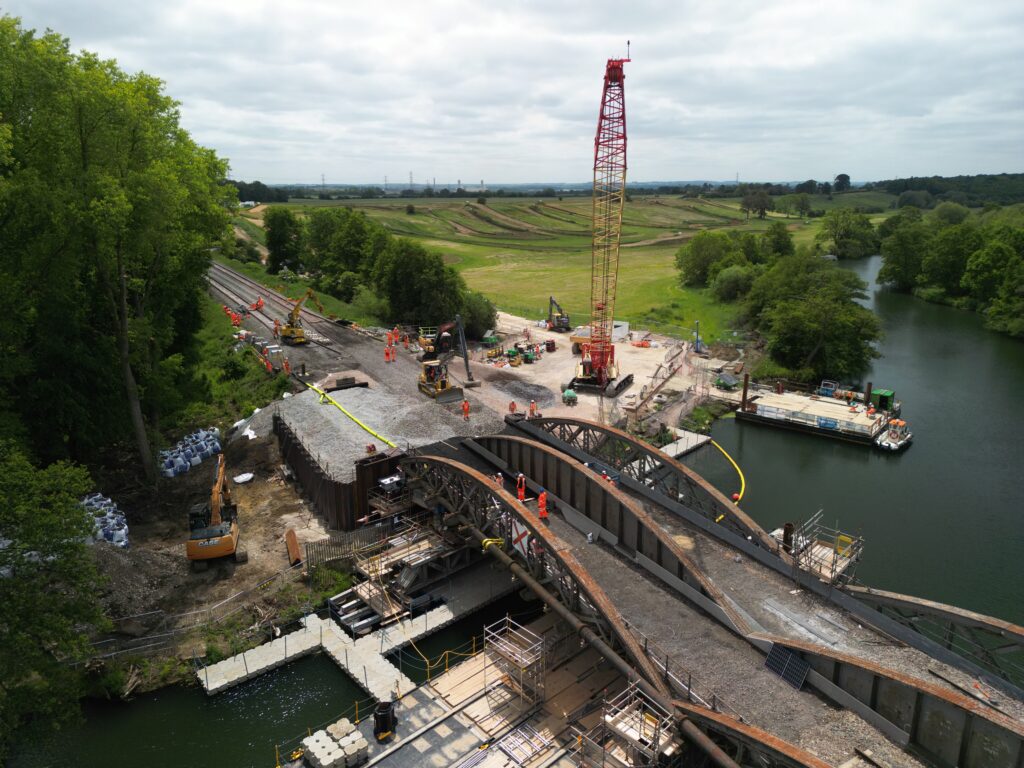
This post was originally published on this site
Network Rail’s 66 day reinstatement of the Nuneham Viaduct in Oxfordshire relied on a tightly planned, just-in-time operation.
Nuneham Viaduct railway bridge across the River Thames in Oxfordshire reopened in early June less than 10 weeks after it closed for emergency repairs in April.
The bridge’s closure was triggered by an accelerated destabilisation in its southern abutment in early 2023. Repairs had to be done quickly because the viaduct is on a critical route. It carries 40 freight trains and more than 100 passenger services a day on the Didcot to Oxford section of the Cherwell Valley Line.
Speaking to NCE in May as the project rolled out, Network Rail capital delivery director Stuart Calvert summed up the speed of the repair operation: “This kind of work would typically take north of two years if we’d planned it, but we’ve been able to complete it in weeks.”
The bow string truss bridge is a 91m long with 4.8m high clearance over the river. It was built in 1907 and had undergone remediation work since then, including the rebuilding of the brick, arched northern abutment in 1929.
But the southern abutment had never previously been reconstructed and issues with its stability had been identified in 2018.

A 750t crane was used to lift two truss structures onto river piles to form the base of a jacking platform that would raise the bridge
By early this year, accelerated movement in the structure was evident, compounded by soft ground conditions around the southern abutment. Efforts to strengthen this ground had been made since 2019, including injecting polymer grout.
This proved unsuccessful and by early 2023 the bridge’s southern end had dropped by 750mm, prompting the need for a new strategy.
Network Rail programme manager Claudia Philps says that in mid-March the Network Rail team began investigating a temporary solution that could be implemented until the bridge could be closed for a longer period. But it was decided this was unfeasible.
“The cost and time taken to deliver a temporary solution would have been comparable to a permanent solution,” says Philps.
On 3 April, the decision was made to close the viaduct to trains until it could be stabilised.
In the absence of a viable alternative route, it was concluded that the bridge should be remediated as quickly as possible.
The project employed 600 people who worked on it for a total of 66 days
Calvert confirms that on 4 April a peer to peer review took place at the site involving engineers from Network Rail, main contractor Balfour Beatty and other specialists from engineering and academia.
By the next day a construction plan had been formed. This would begin with jacking up the viaduct from piles to be driven into the riverbed by a barge-mounted excavator with a piling attachment. Then, the old southern abutment would be removed, a new one would be built and the southern embankment would be strengthened.
Given the time constraint, the decision making process was largely driven by the ability to procure structural elements from Network Rail’s inventory, as well as to speedily engage local specialists, Calvert adds.
“When we were looking at optioneering for both the temporary and permanent works, we had to consider what we could secure in terms of plant and materials in the tight timeframe.”
Philps explains that for the river piling, obsolete piles were used from the Great Western Electrification programme which was completed in the Oxford area in 2016. These were collected from Didcot, 20 minutes’ drive away. “We needed the first few steps in the programme to be actioned quickly, hence we were relying on existing inventory,” she says.
Temporary works
Balfour Beatty senior project manager for western civils contracts Nicholas Watson confirms that by 8 April, track and ballast were removed from the viaduct, while a temporary pontoon was floated close to the southern abutment.
Temporary works specialist Mabey Hire began work on the scheme five days later, tasked with raising the bridge before the abutment replacement work could start.
As Mabey Hire’s work got underway, a piling rig was also being loaded onto a barge, while at around the same time, the river bank was being cleared of vegetation.
For the next phase of work, completed by 25 April, 24 steel piles, each 7m long and 762mm in diameter were driven into the riverbed to create a solid platform for the temporary truss structure that would support the bridge’s southern span while the old abutment was removed.
Mabey Hire senior engineer Colin Campbell says that initially the plan had been to drive three sets of piles into the riverbed.
There were to be two on either side of the structure and one underneath it. Spanning beams were to be placed on them across the width of the underside of the bridge. These were to then be lifted to raise the structure. However, it quickly became clear that this solution was unworkable, Campbell says.
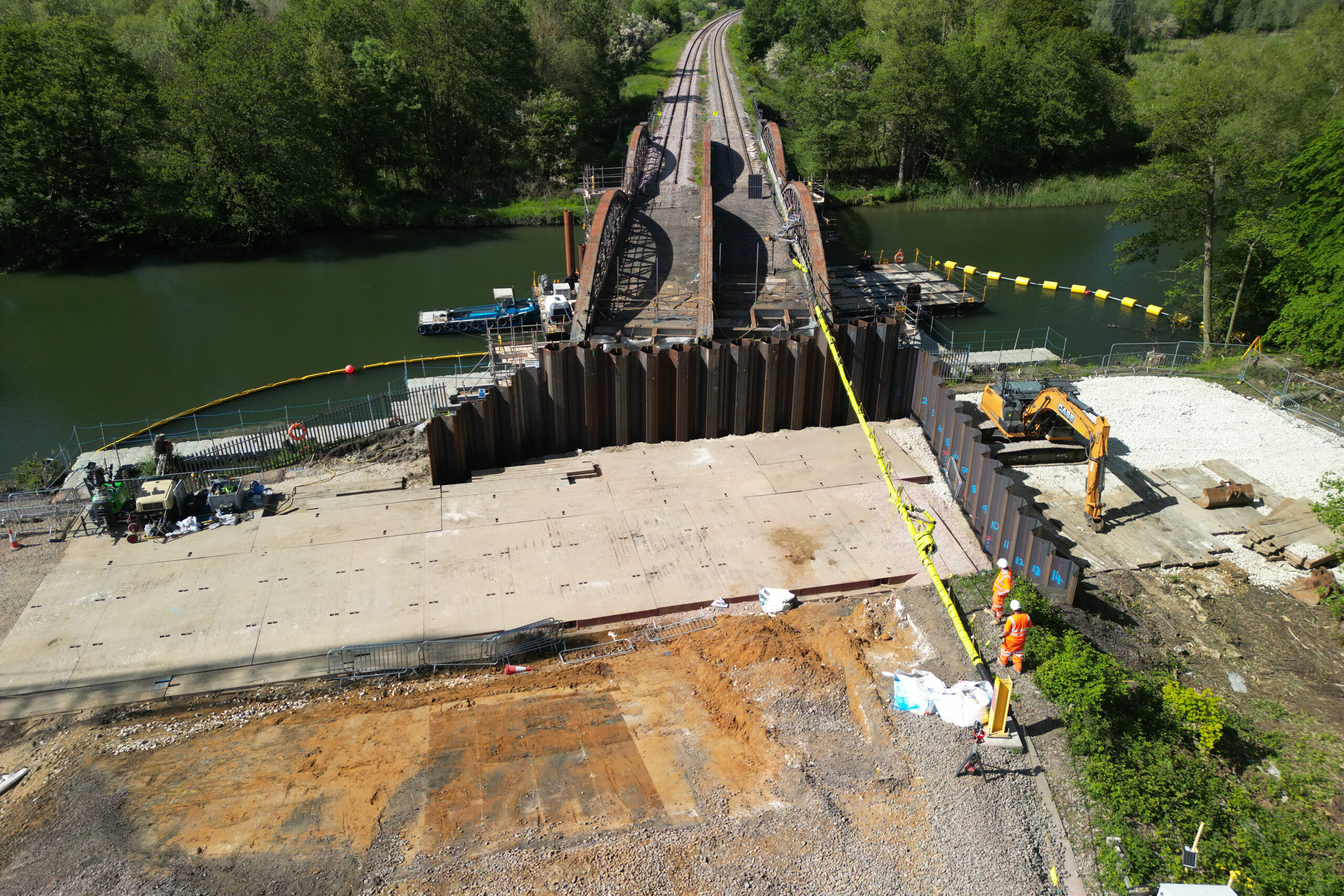
The yellow line marks the location of cables that had to remain undisturbed throughout the works.
“We couldn’t insert the piles running down the centre of the bridge, because the bridge was too low, having dropped about 750mm because of the movement of the abutment.”
Instead, Mabey Hire designed a propping and jacking solution. Its team started by connecting grillage beams to form two truss structures, each made up of four panels joined together to make a 22m by 1.05m truss, with the two trusses positioned side by side approximately 1.5m apart.
The trusses were placed on top of piles driven into the riverbed, followed by a platform for the jacking system, which was supported by vertical spanning girders.
Campbell says Mabey Hire’s planning took place from 13 April, proceeding rapidly over the following fortnight.
“We started fabricating the trusses on 24 April, mobilised the site on 26 April and delivery and installation of the trusses took place on 28 April,” he says. Installation of the jacks took place by 30 April. A 750t capacity crane equipped with a lifting beam was on site by 1 May to lift Mabey Hire’s trusses from the barge onto the river piles.
Watson confirms that by 8 May, the bridge had been jacked up to its original height and was no longer resting on the abutment. Excavation of 3,000m3 of material from the embankment was also underway to create space to build a new abutment.
Final steps
With the piling rig on site, eight 24m long circular hollow section piles were bored 20m into the river bank by 20 May using a crawler crane, to form the new southern abutment.
“All this had to be undertaken avoiding any disturbance to critical cables that couldn’t be disconnected as they provide power to a nearby RAF airfield,” says Watson.
The piling was completed by 26 May, with the reinstatement of the embankment underway on the last day of that month. This job also entailed compacting stone in layers to bring the ground back up to the level of the railway.
Philps confirms that over the course of the project about 4,500t of material was excavated, while 5,000t of material was used to rebuild the abutment and the embankment.
“None of the excavated material was reused due to the properties that were needed for the rebuild. The temporary works foundations, comprising a stone crane pad foundation, were retained and formed the first 2m of the embankment rebuild, so there was some multi-purposing of material brought to site.”
Mabey Hire demobilised its temporary works on 2 June. The installation of new ballast and track panels began the following day. The first trial passenger service crossed the viaduct on 8 June and a full timetable for train services was reinstated on 10 June.
Philps says that the tightly planned operation and deployment of human resources meant that the bridge opened one day ahead of schedule when train services began again on 10 June.
Calvert adds: “The project employed 600 people who worked on it for a total of 66 days.
“We planned this project to complete in 67 days and we handed it back on day 66, so we were 24 hours early, which is the right side of planning to be.”
Nuneham bridge replacement timeline
March
Destabilisation of bridge detected
Mid-March
Temporary solution investigated
3 April
Decision to close viaduct
4 April
Plan of action confirmed
5 April
Commencement of works
8 April
Track and ballast removal complete
13 April
Mabey Hire tasked with raising bridge
24 April
Truss structure fabrication begins
25 April
Steel piles for temporary propping installed
28 April
Truss structure installed
30 April
Jacks installation complete
8 May
Bridge jacked up to original level
19 May
Circular hollow section piles installed
20 May
Permanent piles installation begins
26 May
Piling completed
31 May
Embankment reinstatement underway
2 June
Temporary works completed
6 June
Ballast and track panels reinstalled
Like what you’ve read? To receive New Civil Engineer’s daily and weekly newsletters click here.
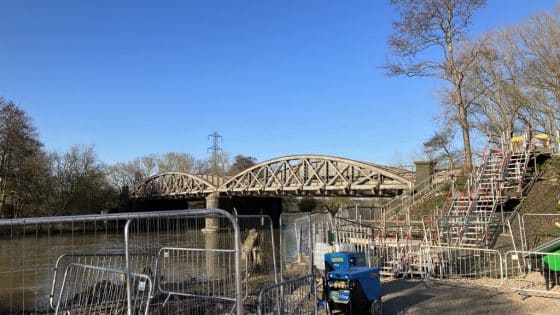
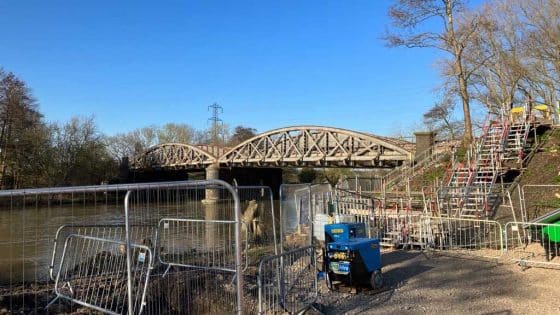


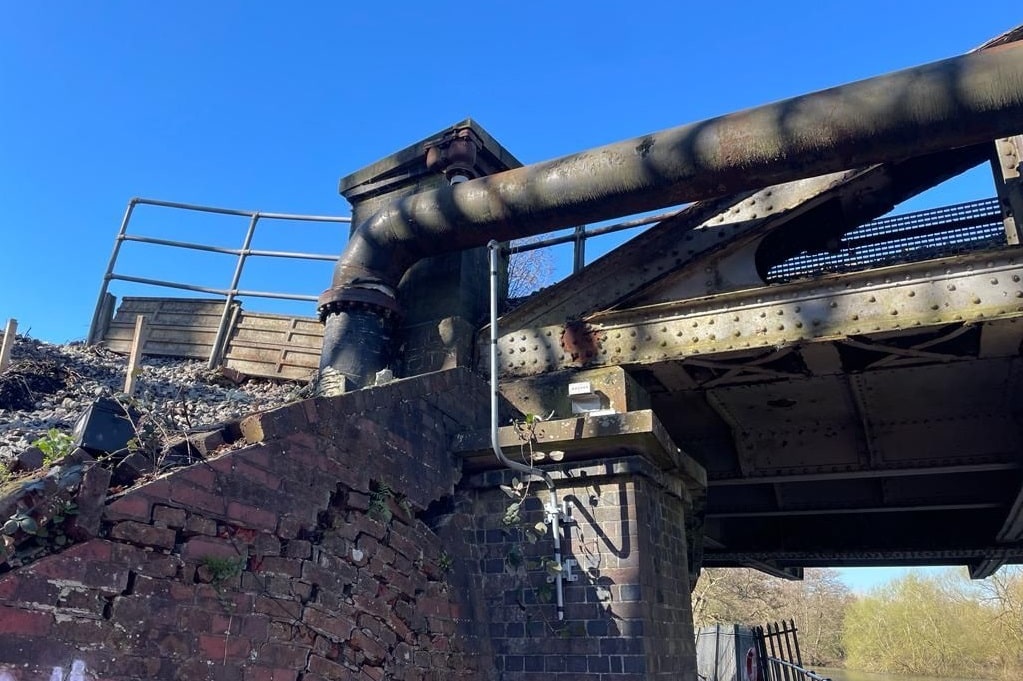
Responses